"Bowers and others saw a motorcycle officer dismount hurriedly and
come running up the incline on the north side of Elm Street. The
motorcycle officer, Clyde A. Haygood, saw no one running from the
railroad yards."

-- Warren Report
While the Report correctly identifies Haygood as the running policeman, they are probably wrong about Bowers having seen Haygood.
Bowers: At the time of the shooting there seemed to be
some commotion, and immediately following there was
a motorcycle policeman who shot nearly all of the way
to the top of the incline.
Ball: On his motorcycle?
Bowers: Yes.
Ball: Did he come by way of Elm Street?
Bowers: He was part of the motorcade and had left it for
some reason, which I did not know.
Ball: He came up---
Bowers: He came almost to the top and I believe
abandoned his motorcycle for a moment and then
got on it and proceeded, I don't know
Ball: How did he get up?
Bowers: He just shot up over the curb and up.
Ball: He didn't come then by way of Ell, which dead
ends there?
Bowers: No; he left the motorcade and came up the
incline on the motorcycle.
Ball: Was his motorcycle directed toward any
particular people?
Bowers: He came up into this area where there are
some trees, and where I had described the two men
were in the general vicinity of this.
Bowers is describing the short run by Officer Hargis to the corner of the retaining wall. Only Hargis didn't ride his motorcycle there; Bowers pictured that in his mind. It would be impossible for Bowers to see to where Haygood dismounted and ran up the knoll. Maybe after Haygood arrived at the abutment. Dale Myers determined that the "two men" Bowers refers to were in the area between the pergola's west shelter and the wooden fence, so Bowers could have seen Hargis' white helmet as he got to the retaining wall.
Haygood was a block away when he heard three shots. He passed the Newman family who were on the ground. He said: "Some of them were pointing back up to the railroad yard, and a couple of people were headed back up that way." When he returned to his cycle, he was told the shots came from the Depository.
"A motorcycle policeman, Clyde A. Haygood, dismounted in
the street and ran up the incline. He stated that he saw no
one running from the railroad yards adjacent to the overpass.
Subsequently, at 12:37 p.m., Haygood reported that the shots
had come from the Texas School Book Depository Building."

-- Warren Report
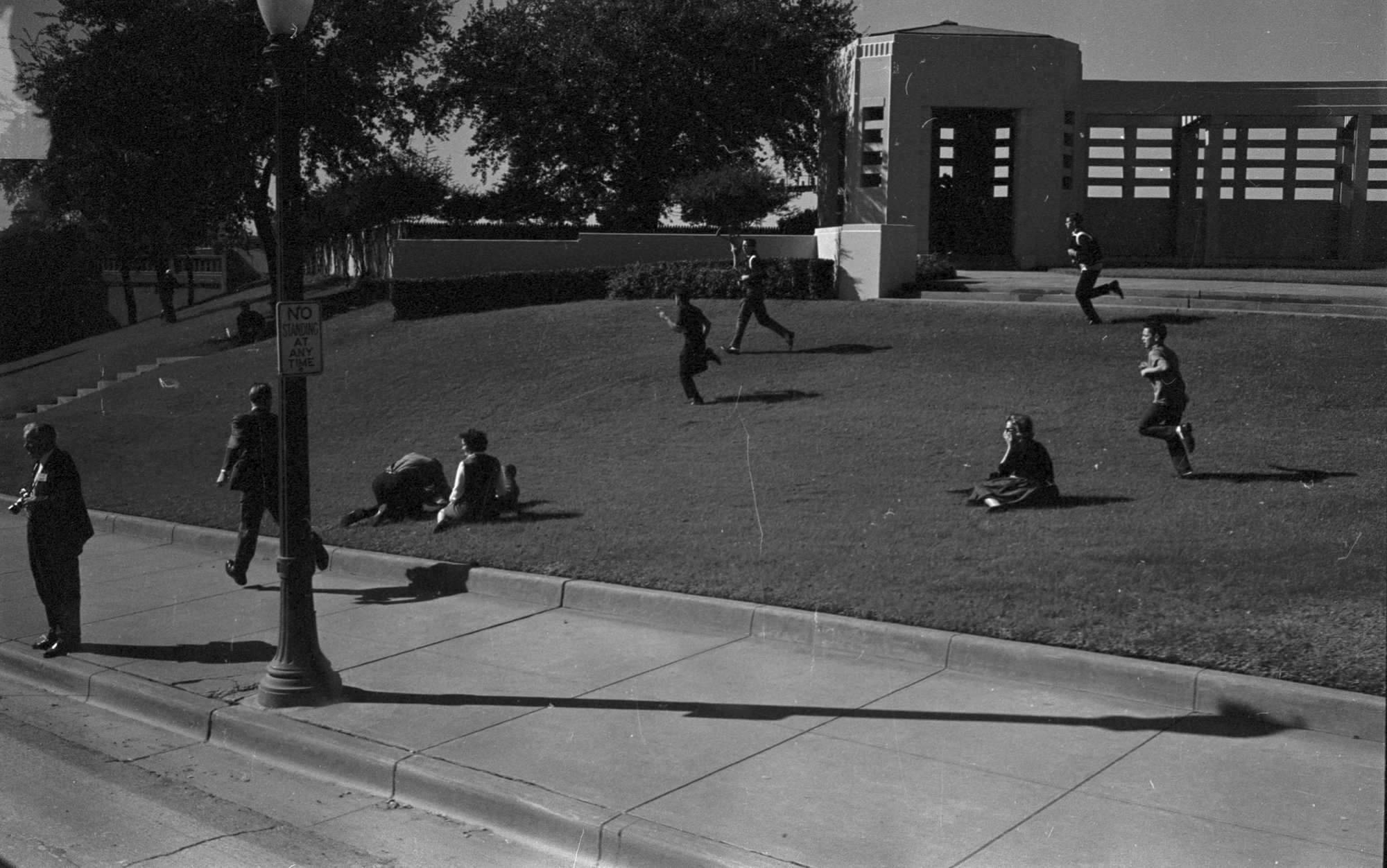
The man in the suit running on the sidewalk is NBC reporter Robert MacNeil. Richard Trask in "Pictures of the Pain" thought it might have been Dallas Morning News reporter Kent Biffle. MacNeil was in the same Press Bus as the photographer, Harry Calbuck, who was working for the Fort Worth Star-Telegram.
James Altgens is standing at the left edge of the Calbuck photo. This would be after he's taken his photo of Zapruder and Sitzman down off the pedestal, and himself having crossed the street.
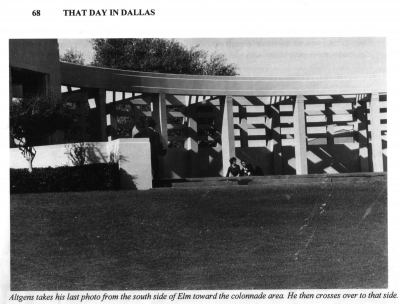
As far as I can tell by the photos and films both Hargis and Haygood left their bikes on Elm Street, so I think this must be a false memory when Bowers refers to a bike going up the incline.
I agree with Dale Myers, Lee Bowers could see right down between the pergola and the steps with Emmett Hudson and the other guy beside him (probably F Lee Mudd). I suspect that the "commotion" Bowers refers to is the third guy on the steps who runs away and then drops the glass bottle that Marilyn Sitzman heard smash just after the Zapruder film stops.
Hargis and his bike could not have been seen by Bowers as the pergola would have hidden them so I would guess that when Haygood stopped and ran up towards the bridge Bowers would have seen this. The Couch film shows Haygood near the storm drain, which means Bowers could have seen him through the gap between the pergola and the fence as per the Allen photo:
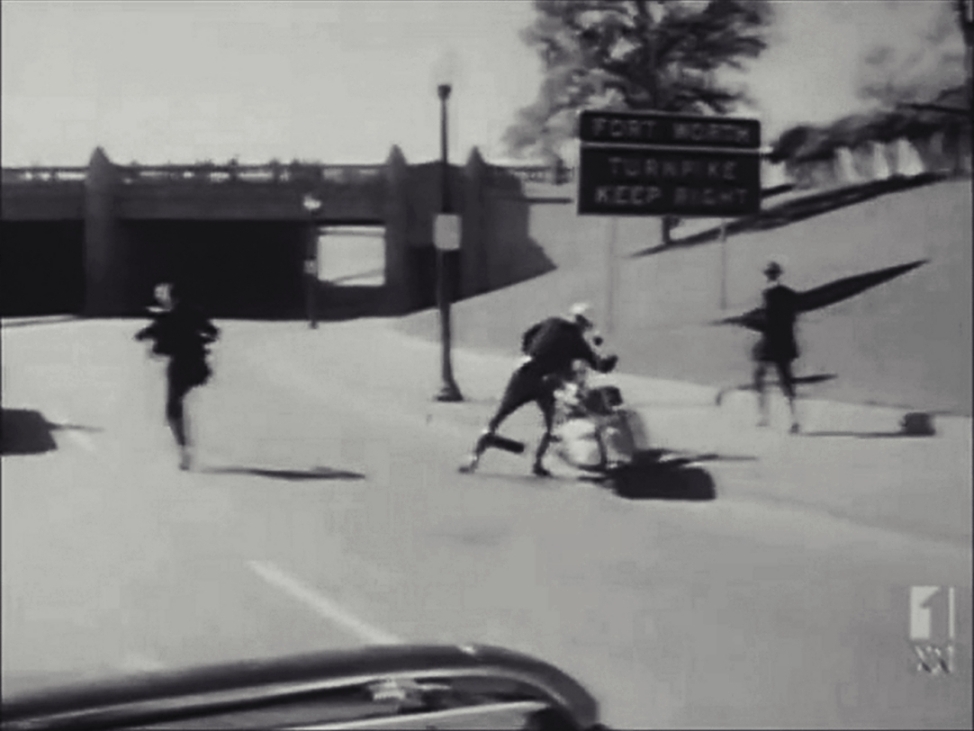
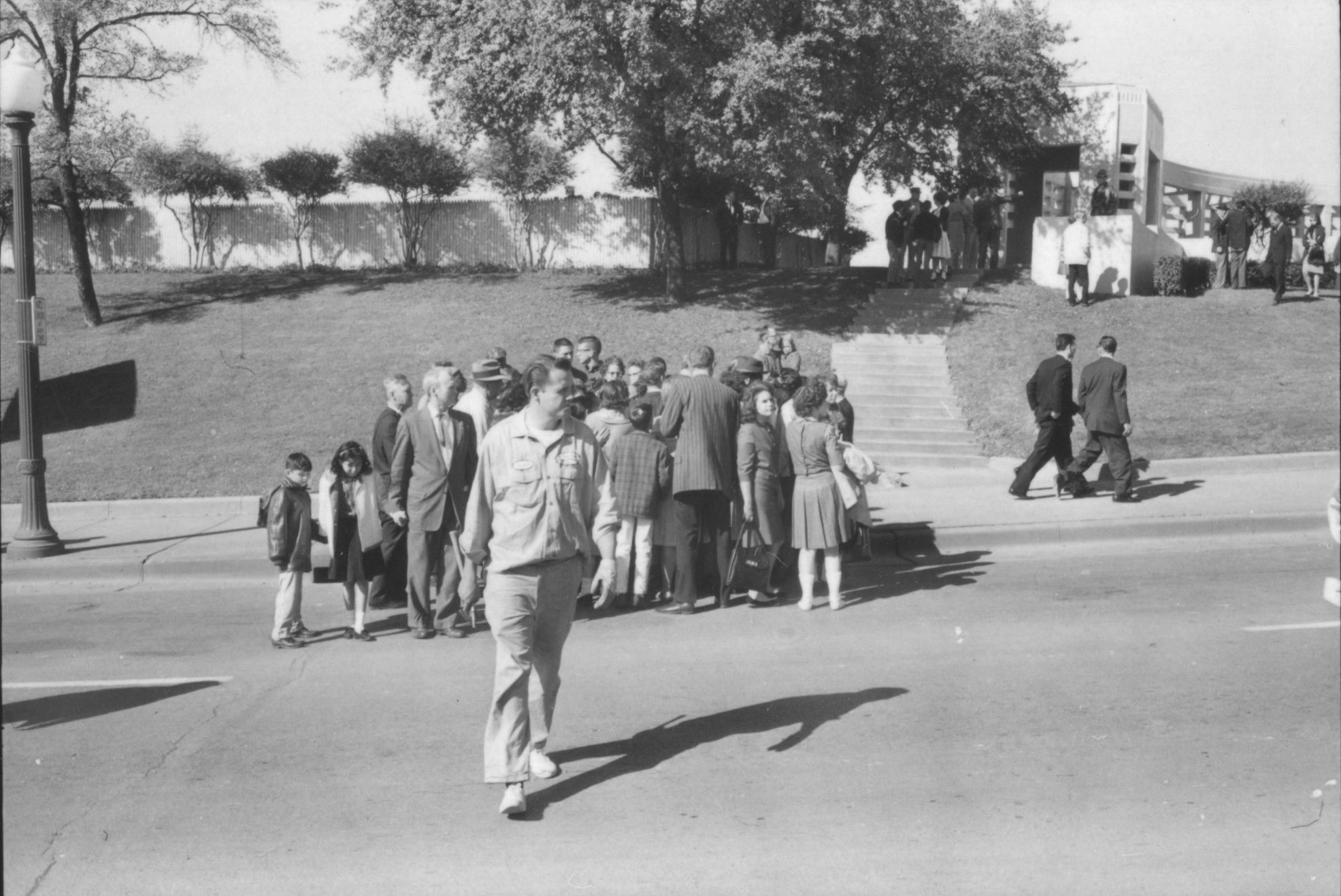
It's possible to prove that Hargis took less than 15 seconds to get from his bike to the lamppost using the Bell and Wiegman films as they both overlap and show Charles Hester leaping into the pergola, which means Hargis didn't ever go up to the retaining wall. Firstly we have this frame which occurs about 11 seconds into the original NBC broadcast of the Wiegman film on the day of the assassination:
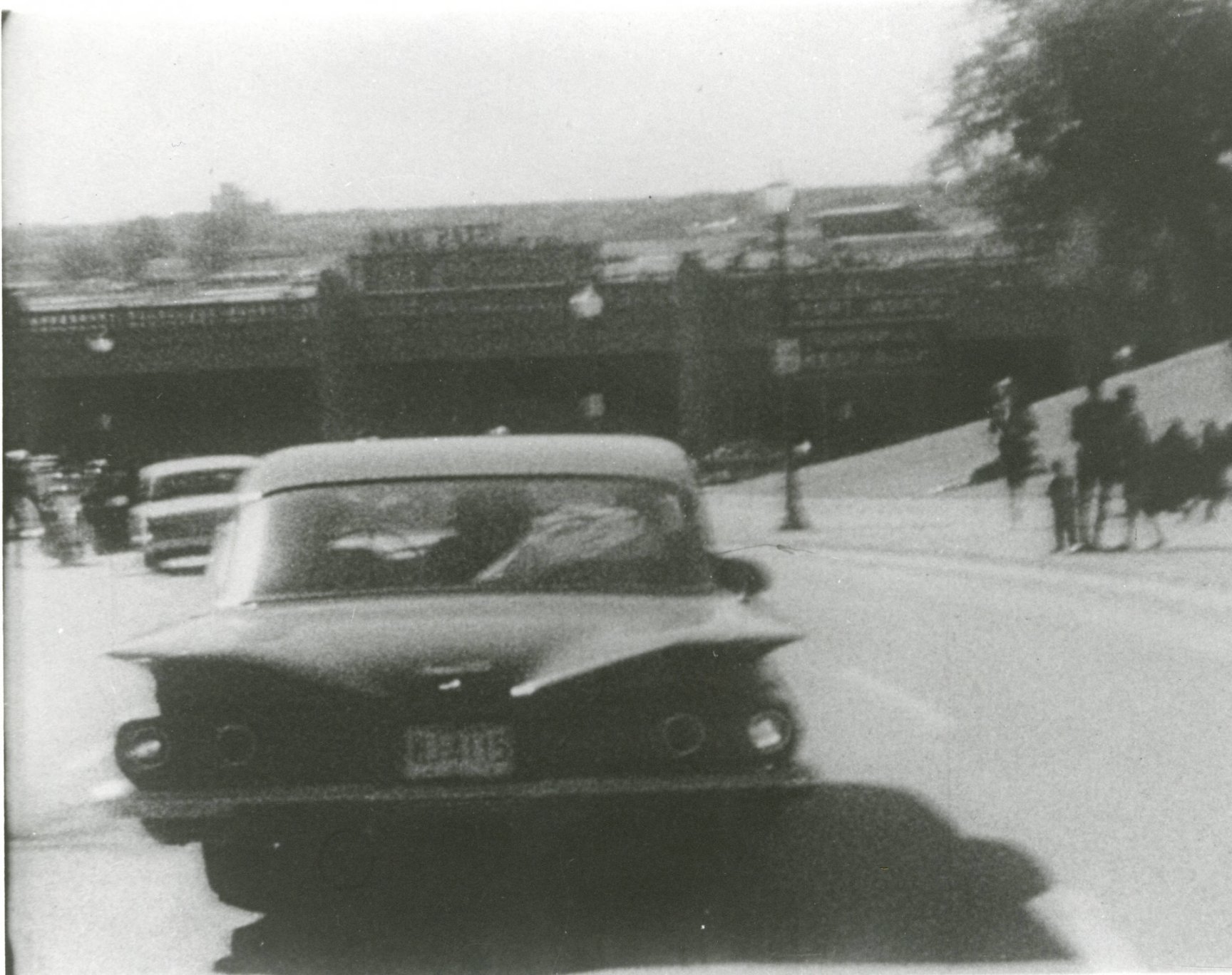
This proves that Hargis is standing by his bike and has yet to run across the road. About 15 seconds later (the Wiegman film is continuously filmed for about 26 seconds in the NBC broadcast) Charles Hester leaps into the pergola which is also caught by the Bell film which shows Hargis is now at the lamppost:
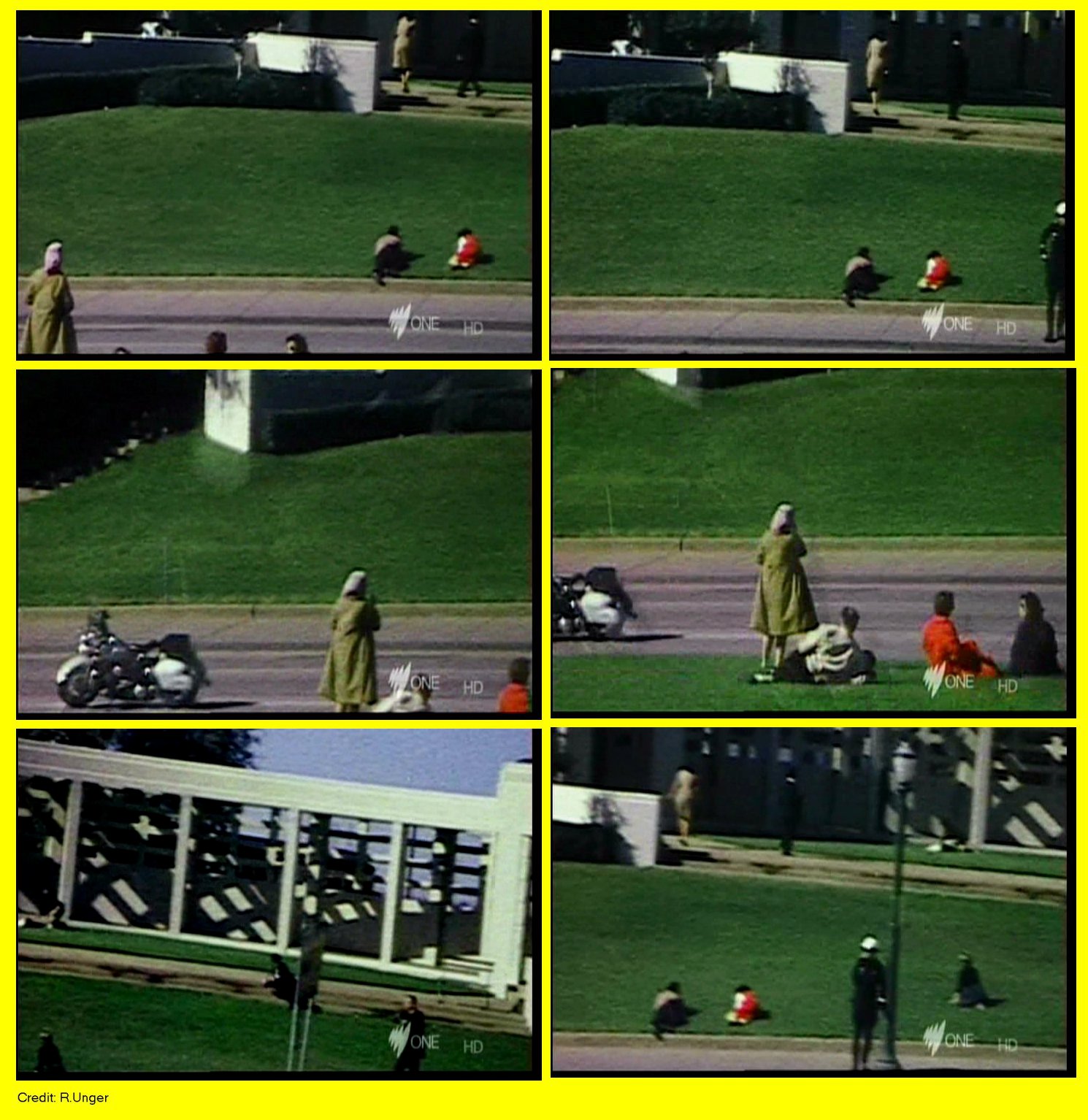
Ergo Hargis has taken less than 15 seconds to get from his bike to the lamppost which proves he had no time to run up the knoll steps or grass. In my animation I have Hargis taking 10 seconds to go from his bike to the lamppost and his peak speed is 8 MPH. The Paschall film also overlaps this timeframe and shows no sign of Hargis on the grass near the retaining wall, just the Newmans lying down and Hargis's bike (Hargis and the lamppost are both hidden by the peristyle column):

You can also see the National Press Pool car passing, and Zapruder getting off the pedestal which I have synchronized in the animation.
The misunderstanding about Hargis and the retaining wall comes from his testimony:
Mr. STERN. And did you run up the incline on your side of Elm Street?
Mr. HARGIS. Yes, sir; I ran to the light post, and I ran up to this kind of a little wall, brick wall up there to see if I could get a better look on the bridge, and, of course, I was looking all around that place by that time. I knew it couldnít have come from the county courthouse because that place was swarming with deputy sheriffs over there.He says he ran to the lamppost which is proven by the films. However, he creates ambiguity when he says "
I ran up to this kind of a little wall, brick wall up there", as you may assume he means he went within touching distance of a wall. I think he means about level with the wall which is what the lamppost is relative to the retaining wall to the west or the smaller garden wall to the north:

The clue that he was nowhere near the retaining wall is this:
Mr. HARGIS. So, no ; I donít remember any picket fence.As a side note the Wiegman film was actually shown by NBC at too slow a frame rate and was about 20% too slow. Adjusting for this the 15 seconds mentioned above is reduced to 12 seconds. I explain this in detail in the handbook appendix C.1:
https://www.marktyler.org/mc63/mc63_handbook.pdfThis is all a bit fiddly to explain but I think all of the evidence matches up, with the only complication being bad witness memories or ambiguous statements. Let me know if anything I said isn't clear, or if you disagree.